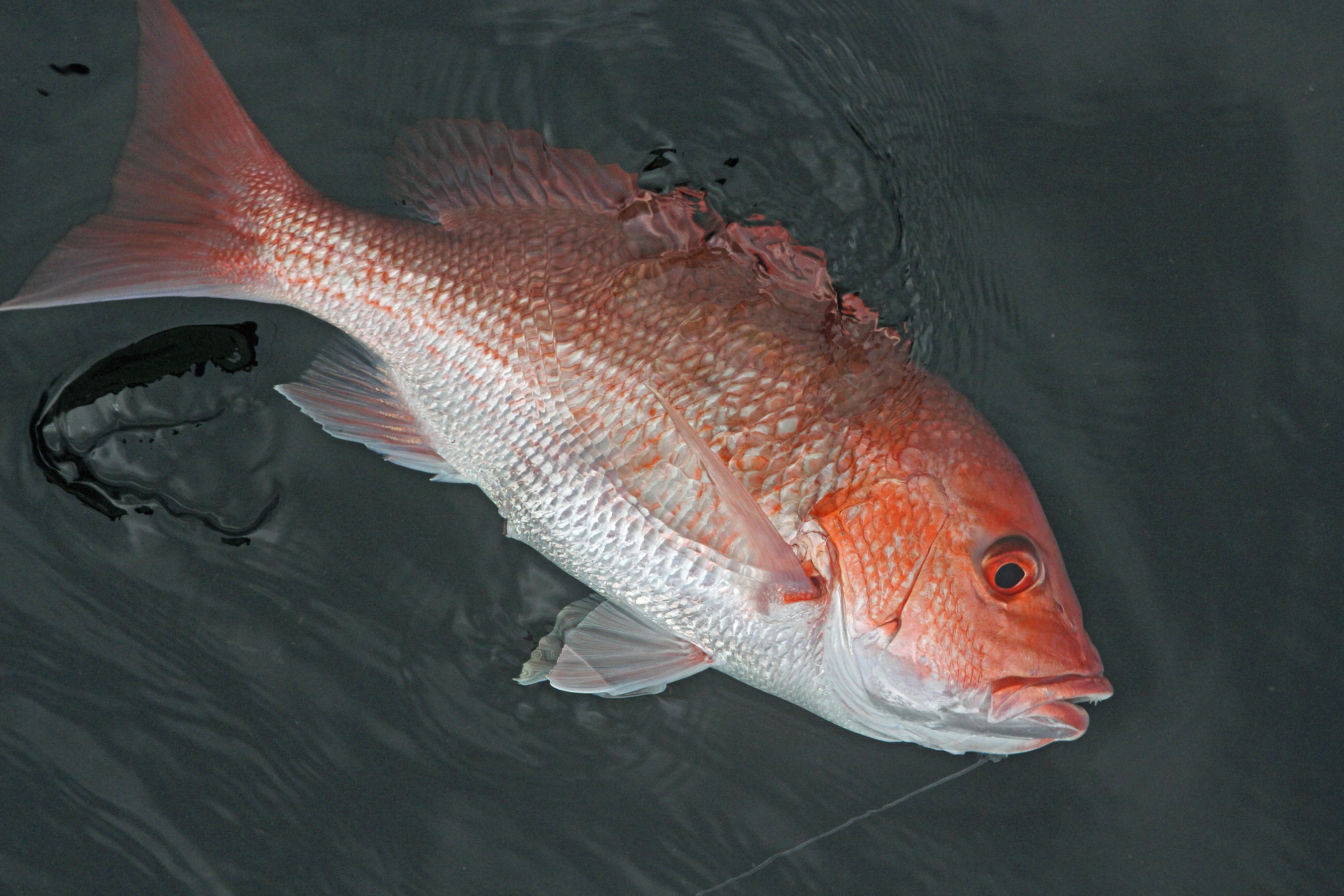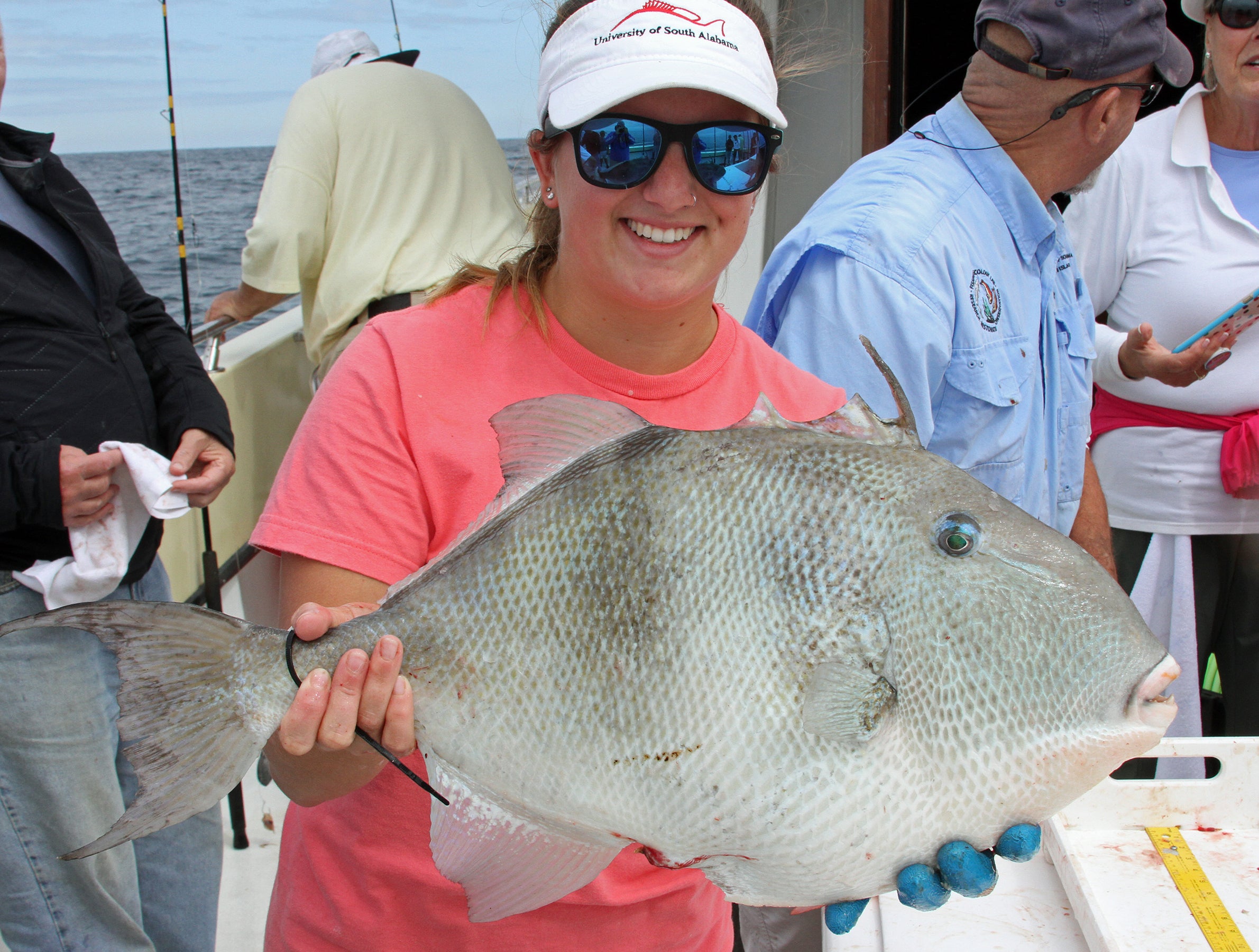By DAVID RAINER, Alabama Department of Conservation and Natural Resources
Unlike last year when almost perfect weather during snapper season led to a faster-than-expected harvest of the quota, the 2019 snapper season reverted to normal weather conditions, leading to a longer season than initially announced.
Snapper anglers enjoyed a 38-day season in 2019 after the 2018 season had to be ended after 27 days to avoid exceeding Alabama’s quota of about 1 million pounds. Alabama Marine Resources Division (MRD) officials were able to add three weekend extensions to the 2019 season to fill this year’s quota.
“This season was more typical of a south Alabama summer,” MRD Director Scott Bannon said. “We had more thunderstorms and increased wave heights on some weekends as opposed to 2018, which had near perfect weather through June and July.
“So, the effort dropped over several of the weekends due to the weather. But that is something we want to have happen; we want people to avoid going when the weather is rough or when it exceeds their boat’s capabilities and their personal capabilities. We want them to stay home during the bad weather because we will still have those pounds of fish to catch later in the year.”
Alabama’s 2019 quota was 1,079,513 pounds, and the final numbers show 1,050,651 pounds of fish were estimated to have been caught, leaving a little more than 28,000 pounds in the water. Bannon said the goal was to get as close to the quota as possible without going over.
“That 28,000 pounds is less than one good weekend day of fishing in Alabama,” he said. “I don’t think we could have done any better.”
MRD officials are able to closely monitor the snapper harvest off the Alabama coast through the mandatory Red Snapper Reporting System, otherwise known as Snapper Check.
“We were able to get that close because of Snapper Check,” Bannon said. “The more people who report, the better the numbers and the better we can predict the effort for the weekend.”
Bannon said one angler lamented that he lost 12 days to weather but only got five back. However, other anglers had the opportunity and took advantage of it.
“I explained to him that he, as an individual, lost that many days, but not everybody was like that,” Bannon said. “We had landings for every weekend, even when the tropical storm went by. I would not have recommended it on some of those days, but some people went anyway.
“We added some additional days during amberjack season in August and then some days on Labor Day weekend. Ultimately, we added the final weekend in October to give people enough time to plan and to have dates when people were more likely to go fishing. The 38-day season is probably more typical of what would be an average season with the weather days. I know the July average wave heights were 3 feet or higher.”
The average size of the snapper caught during the 2019 season was down slightly to 6.81 pounds, which Bannon attributed to several reasons.
“One reason was the weather,” he said. “People didn’t run as far and went to areas that are more heavily fished. Also, I think some people now are not as concerned about trying to catch the biggest fish possible. They’re just catching fish, which is what we want. High-grading or culling and discarding fish works against us if the discards don’t survive. I think more people were happy with the fish they were catching, and they felt this wasn’t going to be the only day they were going to get to go fishing.”
Alabama’s snapper seasons for 2018 and 2019 were operated under an exempted fishing permit (EFP) as the Gulf of Mexico Fishery Management Council worked to approve a state management system, Amendment 50, which passed and is awaiting the Secretary of Commerce’s signature.
“I think the EFP worked well,” Bannon said. “Under Amendment 50, we will have the ability for the state to make adjustments to size, bag limits and season dates. We think our bag and size limits have worked well. It helps keep our data similar from year to year, and we have a good handle on effort based on that.
“So, we’re going to be cautious about making any changes. We want people to get comfortable that the states are managing the snapper season effectively. I think the EFP proved we can manage it as effectively and efficiently as possible. We have been able to give anglers more days because we’re able to account for the fish harvested during the season. The key to the success is the angler reporting the data, and that is why we have the optional reporting for greater amberjack and gray triggerfish in the app.”








